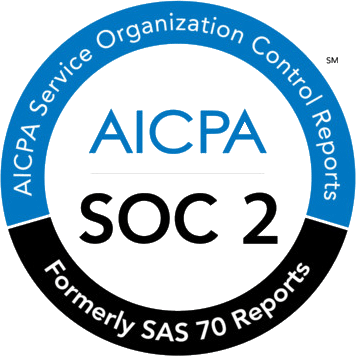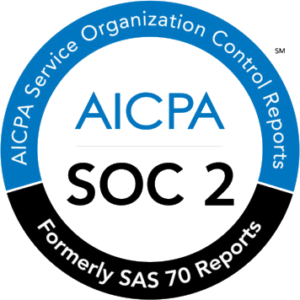Global EV sales look set to hit 17 million vehicles in 2024, meaning more than one in five cars sold worldwide would be electric. As electric vehicles (EVs) become increasingly popular, workplaces are recognizing the need to provide EV charging station management solutions for employees and visitors.
An essential component of this infrastructure is the Charging Station Management System (CSMS). This guide will explore what CSMS are, their types, key features, and how to implement them effectively in your workplace.
Table of Contents
ToggleWhat is a Charging Station Management System?
A CSMS is a software platform that enables the monitoring, control, and management of multiple EV charging stations. It acts as a central hub for overseeing charging operations, user access, energy distribution, and data analytics.
Types of Charging Station Management Systems
- Basic Monitoring Systems
Suitable for: Small offices or businesses new to EV charging
Features: Simple tracking and reporting of charging sessions - Smart Charging Platforms
Suitable for: Medium-sized businesses with growing EV adoption
Features: Load balancing, user management, advanced reporting - Enterprise-Level Solutions
Suitable for: Large corporations with extensive EV fleets or parking facilities
Features: Predictive maintenance, integration with building management systems, comprehensive analytics
Implementing a CSMS: Step-by-Step Guide
1. Assess Your Needs
Begin by evaluating the current and projected EV usage in your workplace. This involves surveying employees about their current or planned EV ownership and analyzing visitor patterns. Next, determine your budget constraints and align them with your organization’s sustainability goals.
It’s crucial to strike a balance between immediate needs and long-term vision. Additionally, consider future scalability requirements. As EV adoption increases, your charging infrastructure should be able to grow accordingly without requiring a complete overhaul.
2. Evaluate Infrastructure
A thorough assessment of your building’s electrical capacity is essential. This involves working with electrical engineers to understand your current power supply and identifying any necessary upgrades to support EV charging stations. Simultaneously, analyze the available space for charging stations.
This includes not only the physical area for the chargers but also considerations for cable management, user accessibility, and potential future expansion. The goal is to create an efficient layout that maximizes the use of available space without compromising on functionality or safety.
3. Select an Appropriate System
When choosing a Charging Station Management System, prioritize user-friendly interfaces. The system should be intuitive for both administrators and end-users to ensure smooth operation and high adoption rates.
Ensure compatibility with various EV models to accommodate a diverse range of vehicles. This flexibility will make your charging solution more inclusive and future-proof. Additionally, consider scalability for future expansion.
The system should allow for easy addition of new charging stations and integration of advanced features as your needs evolve.
4. Professional Installation
Engaging certified professionals for installation is crucial for safety and efficiency. These experts will ensure that all electrical work meets local codes and standards, and that the charging stations are properly configured within your CSMS.
As part of the installation process, implement clear signage and markings for charging spots. This includes not only identifying EV charging areas but also providing instructions on how to use the stations and any relevant policies or etiquette guidelines.
5. Employee Education
Develop comprehensive usage guidelines that cover all aspects of your EV charging system. This should include how to access and use the chargers, payment procedures (if applicable), time limits, and what to do in case of issues.
Conduct regular training sessions on system use and etiquette. These sessions can be part of new employee onboarding and periodic refreshers for all staff.
Consider creating both in-person and digital training resources to accommodate different learning preferences and ensure widespread accessibility to this information.
6. Ongoing Management
Regular analysis of usage data is key to maintaining an efficient EV charging system. This data can provide insights into peak usage times, most popular stations, and overall energy consumption. Use this information to adjust policies based on demand and feedback.
This might involve changing time limits during high-demand periods or redistributing charging stations to better serve user needs. Stay informed about technological advancements in EV charging. The field is rapidly evolving, and innovations could offer opportunities to improve your system’s efficiency, user experience, or sustainability impact.
Key Features to Look for in a CSMS
When selecting an EV Charging Station Management System, several key features should be considered. Real-time monitoring is essential, as it provides instant insights into charging station status and usage, allowing for quick response to any issues.
Remote management capability is equally important, enabling control and troubleshooting from any location, which enhances operational efficiency.
User authentication is crucial for ensuring secure access to charging stations, preventing unauthorized use and enabling personalized services.
Load management is a critical feature that optimizes power distribution across multiple charging points, preventing grid overload and ensuring efficient energy use. Comprehensive reporting and analytics offer detailed insights for informed decision-making, helping to optimize the system over time.
Lastly, payment integration facilitates seamless billing for charging services, improving the user experience and simplifying revenue collection.
Integration and Optimization
Implementing an EV Charging Station Management System (CSMS) is a pivotal step in supporting the transition to electric vehicles and enhancing workplace sustainability. By integrating your CSMS with existing building management systems, you can achieve more efficient energy management across your entire facility.
This integration not only maximizes the benefits of your CSMS but also fosters a greener environment through initiatives such as preferred parking for electric vehicles, which encourage employees to switch to electric.
Utilizing data from your CSMS to highlight the environmental impact of your EV charging initiative—such as statistics on reduced carbon emissions or energy savings—further promotes sustainable practices among employees and visitors, enhancing your organization’s green credentials.
Maintaining a smooth-running CSMS requires proactive management and troubleshooting. Regular system updates ensure optimal performance and security, incorporating bug fixes, new features, and improved compatibility with evolving EV technologies.
Routine checks of physical connections and hardware, such as charging cables, connectors, and station housings, are essential to prevent issues before they arise.
Wayleadr: All-In-One Solution
At Wayleadr, we understand the importance of creating seamless arrival experiences, including EV charging. Our comprehensive software solutions integrate EV charging with the rest of your facilities, enhancing workplace accessibility and sustainability.
By choosing Wayleadr, you can provide efficient, user-friendly charging solutions that benefit employees, visitors, and the environment. To learn more about how Wayleadr can enhance your EV charging infrastructure and overall arrival management, visit wayleadr.com.












